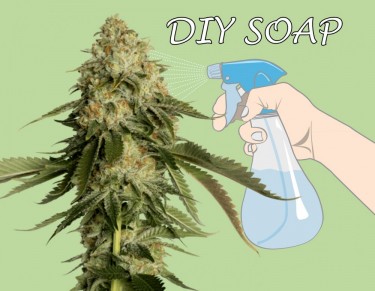
Don’t forget to wash your buds
There are many thoughts on how best to treat weeds to get the best crop results. While some feel that treatments like bud washing are unnecessary, others are adamant that cleaning your weed is important. Well, don’t worry because this article contains everything you need to know about bud washing and why it’s important. In this article, we also address concerns that this process is counterproductive, and highlight possible pros and cons of the process.
By the end of this article, you should be able to say whether or not washing bud is a worthwhile process for getting the desired results from weed.
You are not wrong if you think of flower washing as the process of cleaning cannabis flowers by dipping them in water after harvest. While this forms the basis of the process, there is so much more to washing the buds to do besides immersing cannabis buds in water to clean them. The root of this process does not have to be traced far back as most agricultural products such as vegetables and edibles go through a purification process before use. Store-bought produce and home garden produce are usually washed alike to remove soil particles and impurities present during the flowering phase. Cannabis buds are no different either.
Any experienced cannabis grower knows that there are numerous living and non-living entities that interact with the cannabis plant during the flowering phase. From soil particles, dirt, crawling insects, and pesticide residues, numerous contaminants cling to sticky cannabis buds. It is therefore unwise to use your cannabis buds while they contain these contaminants as they will affect the flavor and potency. These contaminants are common in cannabis flowers grown both indoors and outdoors, meaning any type of weed needs to be cleaned before use.
Due to the low awareness of the importance of bud washing, various notions have been floating around that it is counterproductive. These ideas, while well intentioned, are far from the truth. One such notion is that the important cannabinoids and terpenes in the matrix of the cannabis plant are lost upon immersion in water. Therefore, it is believed that buds that go through a bud wash will not have the desired taste and effect due to the loss of cannabinoids. These notions are not true and there are credible reasons to refute them.
The major cannabinoids in weed like THC and CBD are hydrophobic and fat-soluble. This means that when cannabis flowers are dissolved in water, they cannot be dissolved in the water. Likewise, terpenes, which play a large role in the taste and aroma of weed, are bound to sticky resins in the plant. This means that if the process is done carefully and correctly, it cannot be lost. This refutes the belief that bud washing is a counterproductive process that can lead to unwanted effects on buds.
We’ve talked at length about why it’s important to clean your weed. The next step is to get down to the nitty-gritty of the process. Some growers essentially use water to clean their weed, while others use special formulas for more conscious reasons. Here are some of the common solutions used by some growers to wash the buds.
-
Lemon and Baking Powder – The acidity of lemon and the alkalinity of baking soda make it a good solution for deodorizing spills and effectively cleaning buds without using synthetic products.
-
Dilute hydrogen peroxide – It contains antimicrobial properties that make it effective in removing microbes like bacteria that may be present on the cannabis buds.
-
reverse osmosis water – This is the best type of water to use to wash the buds as it flows through a semi-permeable membrane to remove molecules that can contaminate the buds.
In summary, if you wish to continue washing the buds after harvest, you will need clean buckets (3 × 5 gallons), 45 liters of room temperature water (reverse osmosis water if possible), ¼ cup baking soda and ¼ cup of lemon juice.
Step 1
Arrange the clean buckets in a production line style. The first bucket contains the cleaning solution while the second bucket contains the first rinsing solution. The last bucket contains the second rinse solution. The buckets with the rinsing solutions serve as rinsing stations along the production line.
step 2
Fill each bucket with 4 gallons of reverse osmosis water, enough to wash the buds without splashing the water around. Pour the measured amount of baking soda and lemon juice into the first bucket and stir well. This will serve as a cleaning solution to start washing the buds.
step 3
Dip a twig with buds in the first bucket and swirl for 30 seconds. Move the branch into the second bucket and, just like you did the first bucket, dip the branch into the bucket and swirl for 30 seconds. Finally, move the twig to the third bucket, dip and swirl for 30 seconds to remove all traces of dirt and the first solution.
step 4
Remove each bud from the branch before drying in a herb dryer. Another alternative is to dry the entire branch by hanging it on a drying line. Continue drying the weed in a dark room with good ventilation and a desirable 45-55% relative humidity. After that, start the curing process to further enhance the flavor of the buds. This extended drying time is one of the notable downsides of flower washing. If moisture is not done properly, it can lead to the growth of mold which is harmful to the weeds.
bottom line
Flower washing is a unique process that is very important to the safety and health of any cannabis user. Although awareness is low now, it is already catching on and will surely soon be a process in which all and sundry will participate.
DIRTY NUGS, READ MORE…

CLEAN YOUR WEED FOR A BETTER SMOKE, HERE ARE SOME TIPS!
OR..

DIY SOAP SOLUTIONS TO CLEAN YOUR CANNABIS PLANTS AT HOME!

Post a comment: